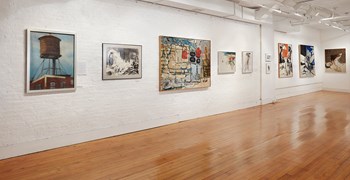"Separate & Together: Opposites in the Art and Life of Edward Hopper" by Dorothy Koppelman
The more I study this Aesthetic Realism principle stated by Eli Siegel, the more I am thrilled at its truth: "The world, art, and self explain each other: each is the aesthetic oneness of opposites."
The way Edward Hopper, in his great paintings of the city and its people, puts together the opposites of Separation and Togetherness, is why I, like so many others, care for him so much. We can see our city and ourselves with new eyes as we see how opposites are here.
These sentences from Mr. Siegel's book Self and World are crucial in understanding the central impetus of the painter and the work itself:
"A person is separate from all other things and together with all other things. To understand opposites in a self, the meaning of together and separate must be seen. All art puts separateness and togetherness together. All selves want to do this."
Hopper, who lived from 1882 to 1967, was born in Nyack, on the Hudson River, but lived in New York City most of his life. He painted the small towns, the country roads, the country stores, the early buildings, the gas stations, cities of America in such a way that he has come to symbolize the American feeling. He shows, in his fortright manner and yet equisitely subtle compositions of people and things, that no matter how locked in, how shut off a person may seem, we are inevitably related to everything around us. . . . more












